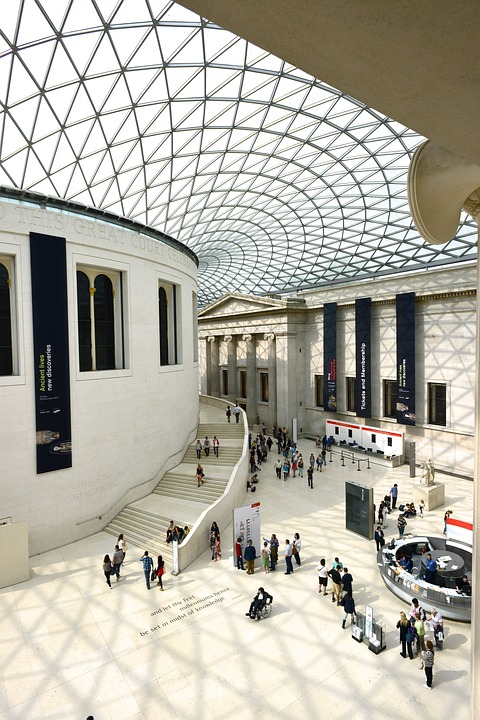
Introduction
British fashion has a rich and diverse history that dates back centuries. From the elaborate dresses of the Elizabethan era to the tailored suits of Savile Row, British fashion has long been recognized for its creativity, craftsmanship, and innovation. Over the years, British fashion trends have evolved and influenced global fashion, leaving a lasting impact on the industry.
The Elizabethan Era (1558-1603)
During the Elizabethan era, fashion in England was characterized by elaborate and extravagant clothing. Women wore dresses with wide skirts, corsets, and ruffled collars, while men donned doublets, breeches, and ruffs. The use of luxurious fabrics such as silk, velvet, and satin was common, and clothing was often embellished with intricate embroidery and lace.
The Influence of Queen Elizabeth I
Queen Elizabeth I was a major influence on fashion during this period. Known for her lavish clothing and love of pearls, she set the standard for the aristocracy and upper classes. Elizabethan fashion was also heavily influenced by the Renaissance, with an emphasis on rich colors, ornate patterns, and opulent textiles.
The Victorian Era (1837-1901)
The Victorian era was a time of great change in fashion, with an emphasis on modesty, elegance, and social status. Women’s clothing was characterized by full skirts, tight corsets, and elaborate decoration, while men’s clothing featured frock coats, waistcoats, and top hats. The Industrial Revolution also had a significant impact on fashion, with the mass production of clothing leading to more affordable and accessible styles.
The Influence of Queen Victoria
Queen Victoria was a powerful influence on Victorian fashion, popularizing trends such as mourning wear and the use of tartan patterns. Her marriage to Prince Albert also popularized the white wedding dress, which became a symbol of purity and innocence. Victorian fashion was also influenced by the Arts and Crafts movement, which emphasized handcrafted and labor-intensive techniques.
The Swinging Sixties (1960s)
The 1960s marked a period of social and cultural revolution in Britain, with fashion playing a key role in the changing attitudes of the time. The Swinging Sixties saw the rise of youth culture, with iconic fashion designers such as Mary Quant and Biba leading the way. Mini skirts, bold patterns, and psychedelic prints became popular, reflecting the spirit of rebellion and freedom.
The Influence of Twiggy and The Beatles
Twiggy, the iconic model of the 1960s, became a fashion icon with her boyish figure and mod style. Her pixie cut and doe-eyed look inspired a generation of women to embrace a more androgynous and youthful aesthetic. The Beatles also had a major influence on fashion, with their eclectic mix of styles and rebellious attitude shaping the look of the decade.
The Punk Movement (1970s)
The punk movement of the 1970s emerged as a reaction against the mainstream fashion industry, with its DIY aesthetic and anti-establishment ethos. Punk fashion was characterized by ripped clothing, safety pins, leather jackets, and provocative slogans. Designers such as Vivienne Westwood and Malcolm McLaren played a key role in popularizing the punk look, which continues to influence fashion today.
The Influence of The Sex Pistols
The Sex Pistols, a British punk band, were instrumental in shaping the punk fashion movement. With their aggressive music and rebellious attitude, they became synonymous with the punk ethos of self-expression and non-conformity. The band’s iconic album covers and DIY style became symbols of the punk subculture.
Savile Row and British Tailoring
Savile Row, located in the heart of London’s Mayfair district, is renowned for its traditional bespoke tailoring. Since the 19th century, Savile Row has been synonymous with impeccable craftsmanship, attention to detail, and timeless elegance. British tailoring is characterized by its emphasis on quality materials, precision cutting, and hand-finishing techniques.
The Influence of Savile Row on Modern Fashion
Savile Row has had a lasting impact on modern fashion, with its signature style influencing designers around the world. The classic tailored suit, with its structured silhouette and impeccable fit, remains a staple in menswear. Celebrities and style icons continue to favor British tailoring for its elegance and sophistication.
Conclusion
British fashion has a long and storied history that continues to shape modern day trends. From the elaborate costumes of the Elizabethan era to the punk-inspired looks of the 1970s, British fashion has always been at the forefront of innovation and creativity. With its rich heritage and diverse influences, British fashion will no doubt continue to inspire and influence the industry for years to come.
Leave a Comment